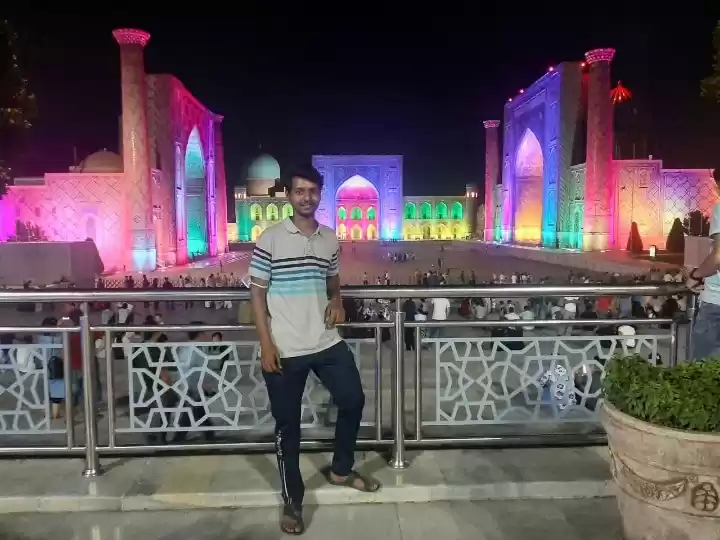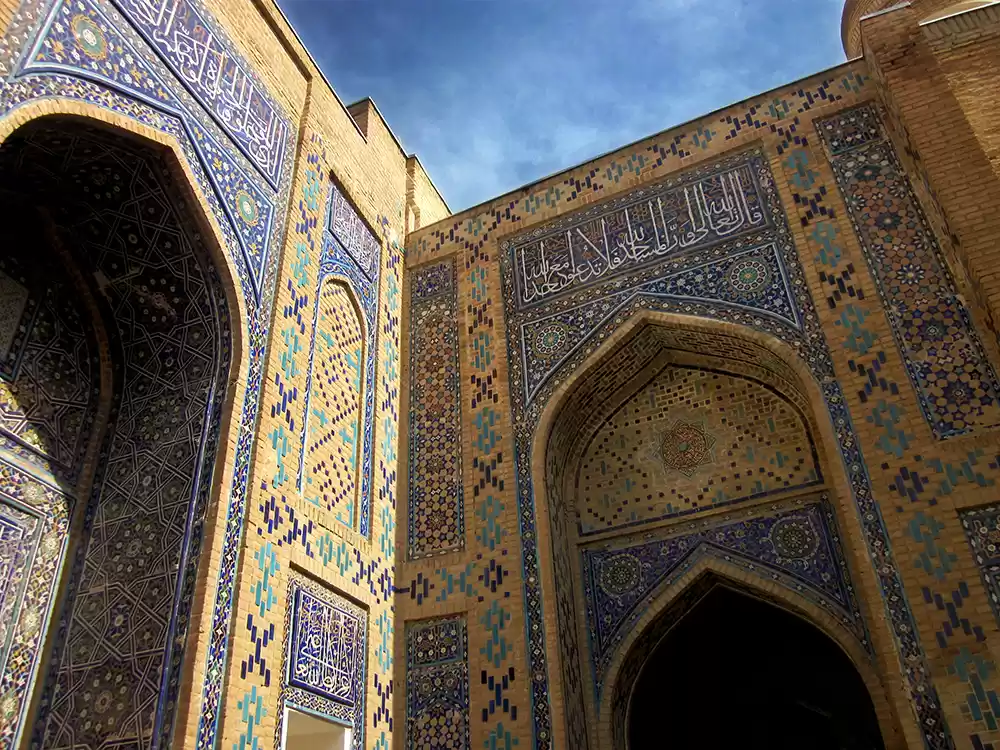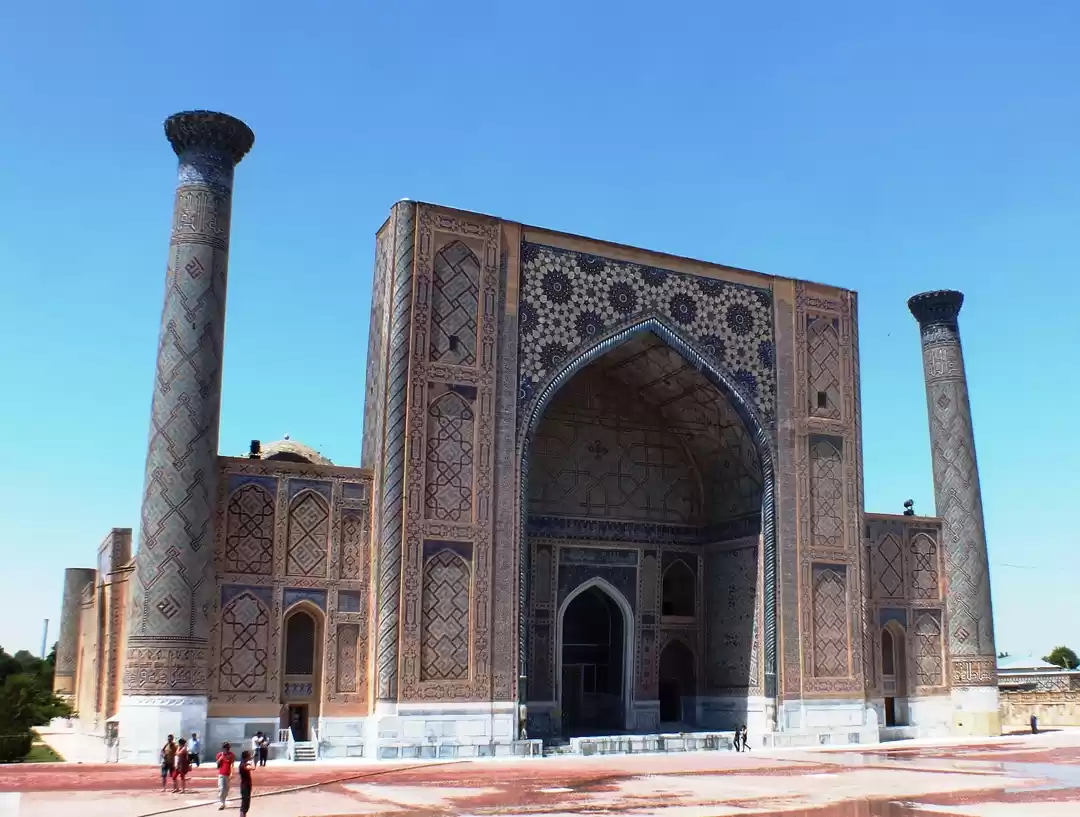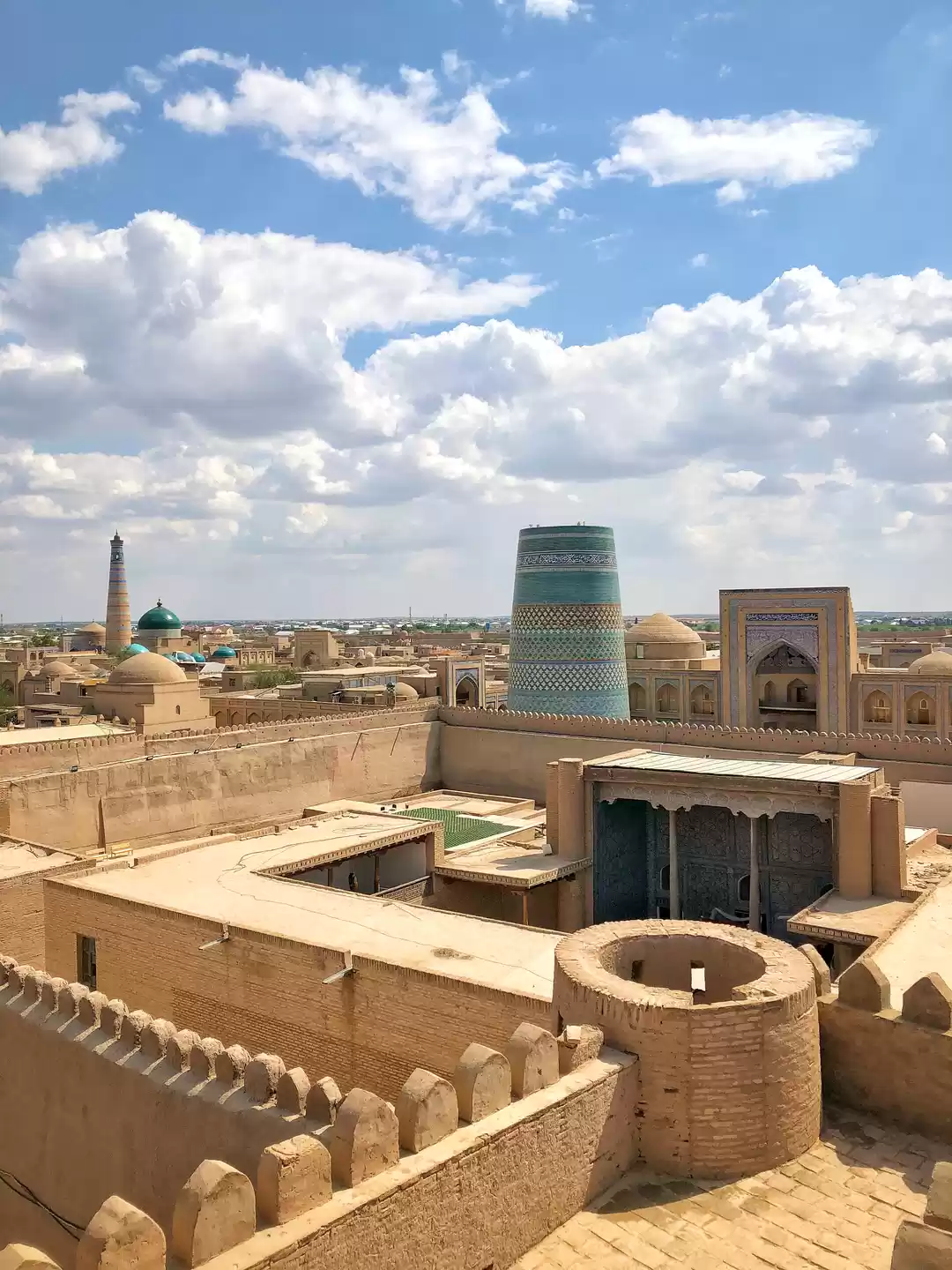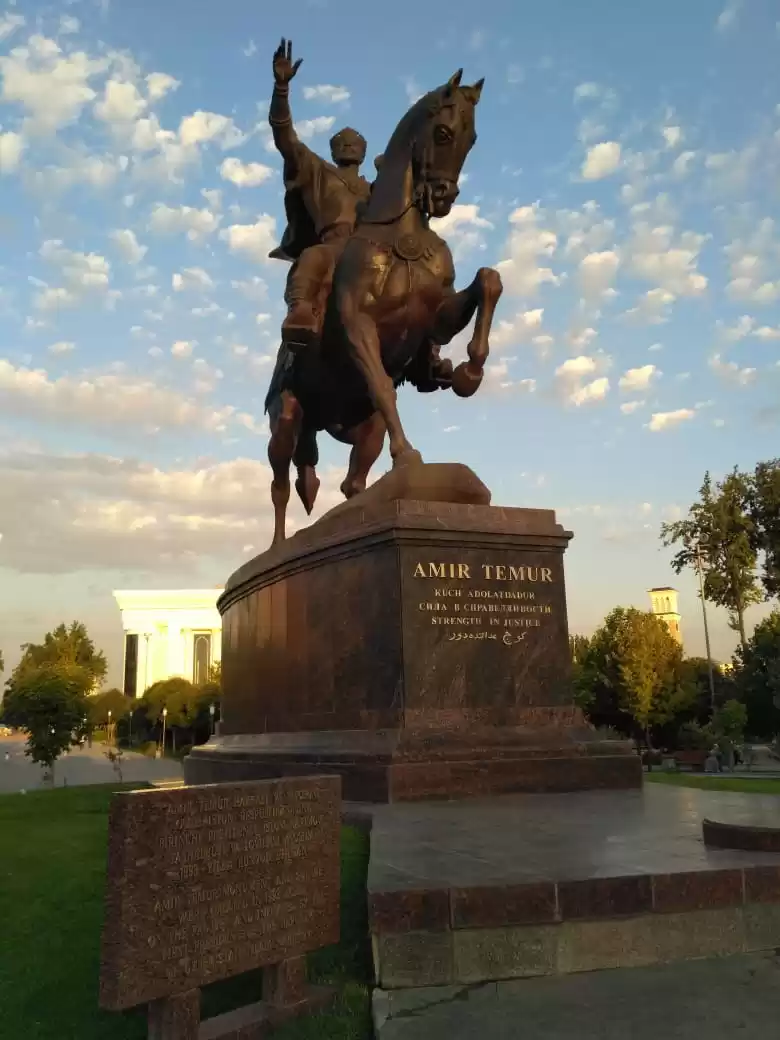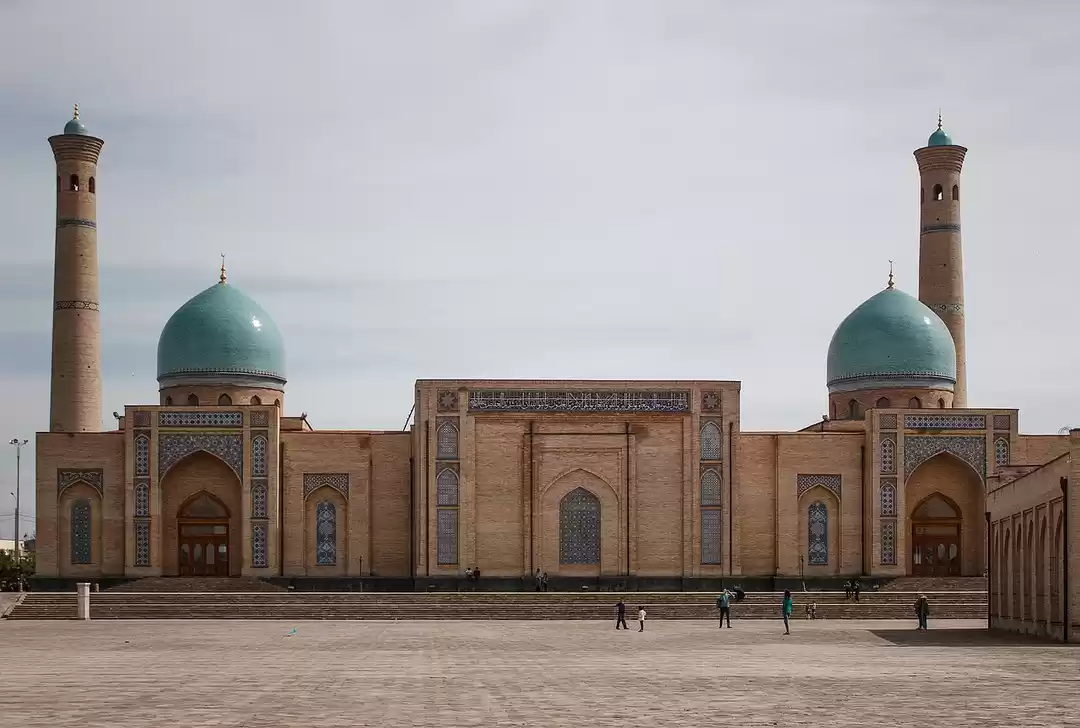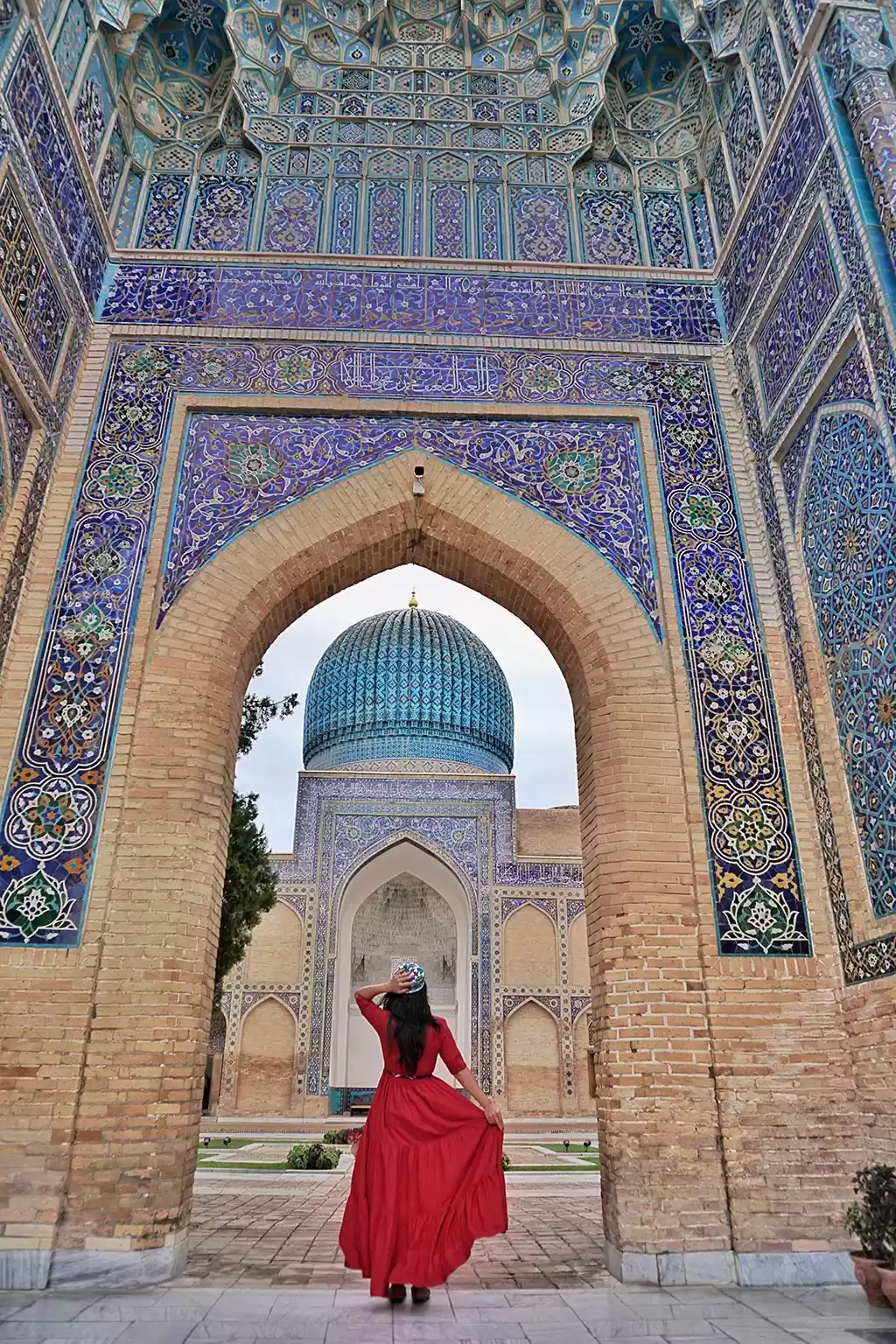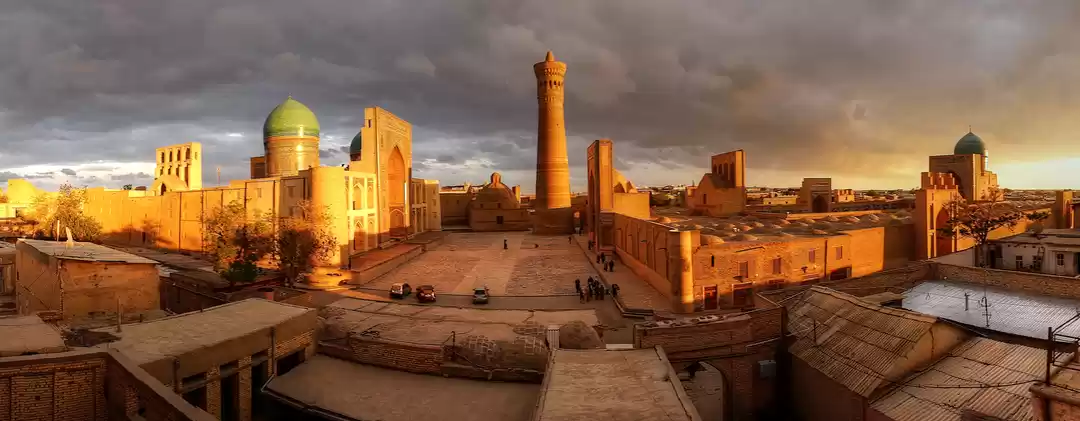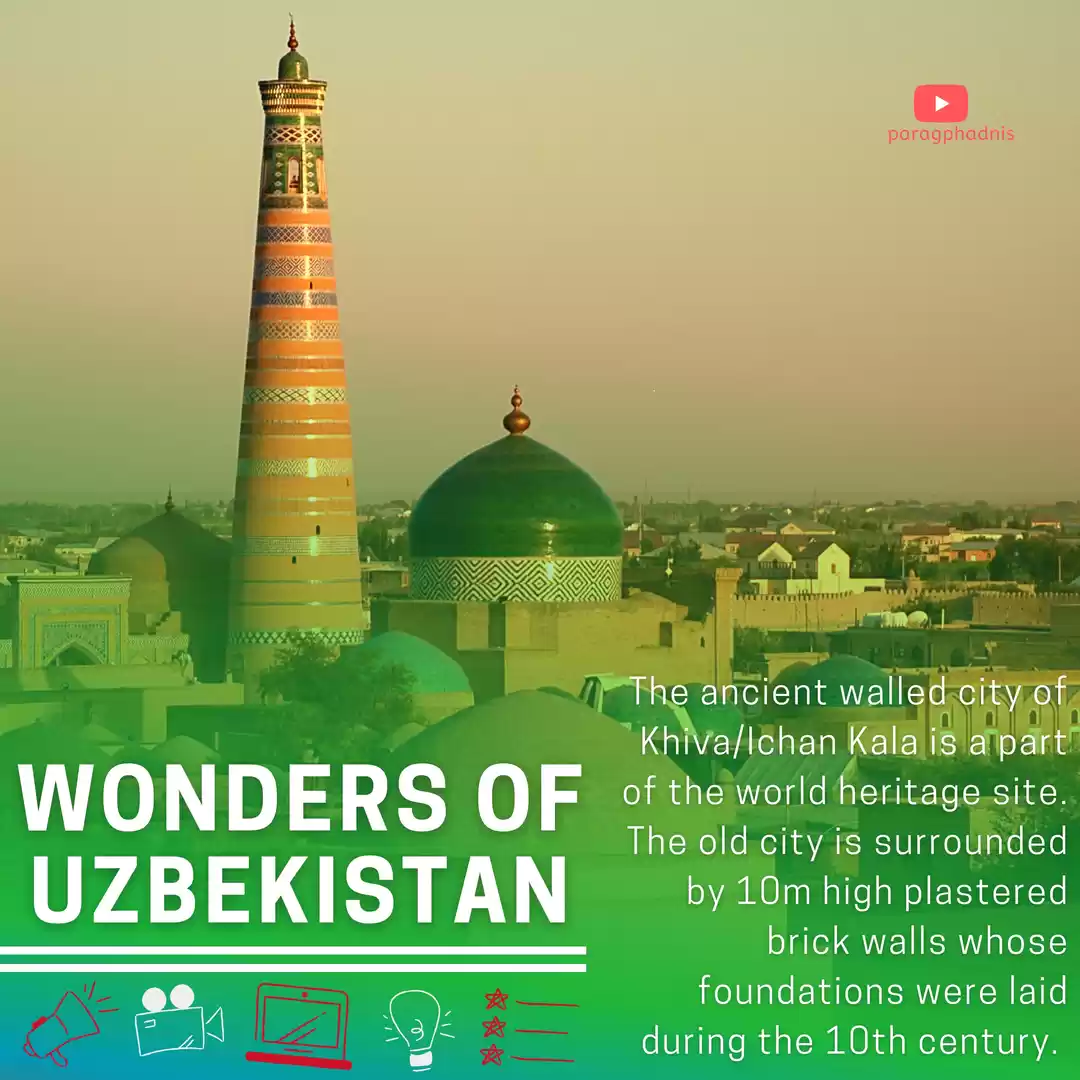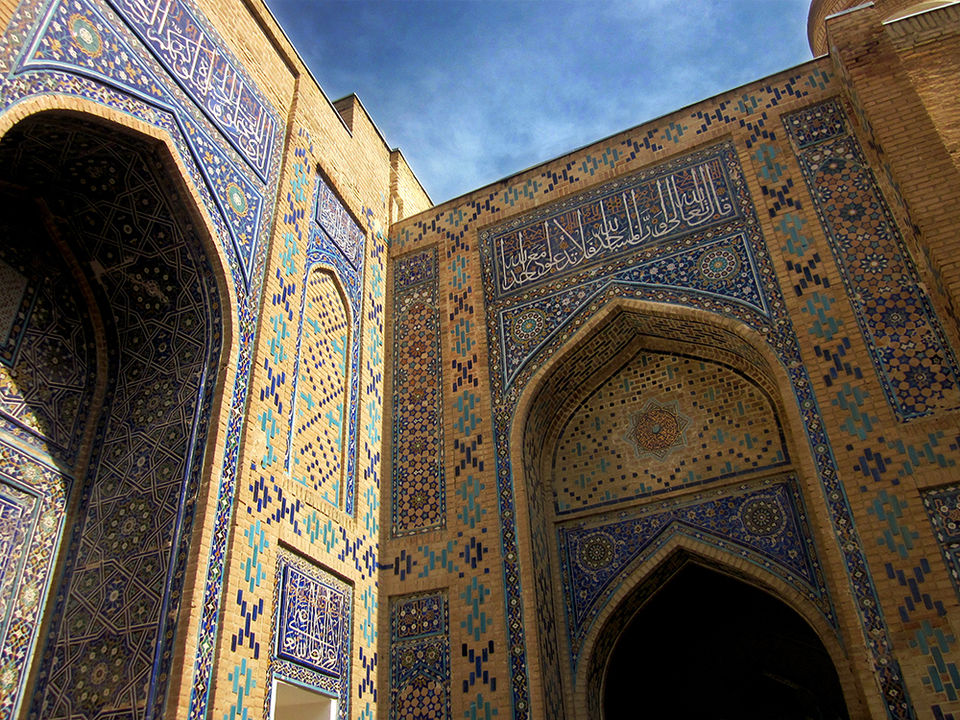
You surely know about the centuries old Silk Route in Samarkand. You perhaps have heard of Registan Square too. But have you heard of a street atop a hill that seduces you with the color blue? That’s also a travel back in time & is home to a Living King? From a distance the Shah-i-Zinda looks like an arrangement of blue domes. Just only till you get close & enter the complex of course. That’s when you realize how visually stunning it is. A sight to behold this ensemble is in reality a cluster of mausoleums. And if Registan Square has symmetry as its hallmark, this is a mildly surreal & delightful artistic expression albeit for the dead.
SAMARKAND MAKES YOU GO WOW!
Samarkand does surprise you. I had chosen Uzbekistan to trace some of the Silk Route journeys that fascinated me as a student. But I was to discover several centuries of masterpieces carefully preserved by time & man. The streets here are wide and the land has strong yellowish-brown overtones. Earth dominates the base color of most structures. In that are carefully arranged tiles with motifs & narratives of harmony. So if you are a story collector, Samarkand is your most prolific chronographer.
Shah-i-Zinda (meaning ‘The Living King’ in Persian) got its name from the legend around Prophet Muhammed’s cousin, Kusam Ibn Abbas. His tale from the end of the 7th century goes like this. The cousin & Hakim (mayor) of Mecca was sent with a small army to Samarkand to convert the city to Islam. He apparently fought several battles with the locals who then eventually converted. But other powerful tribes attacked causing the death of Kusam Ibn Abbas. ‘The Living King’ is however woven out of a far more interesting ending. One in which he is said to have escaped by going underground through a well, where he is said to to be still living ostensibly today. I just love these stories because they become part of what many of us like to believe too. That souls live on.
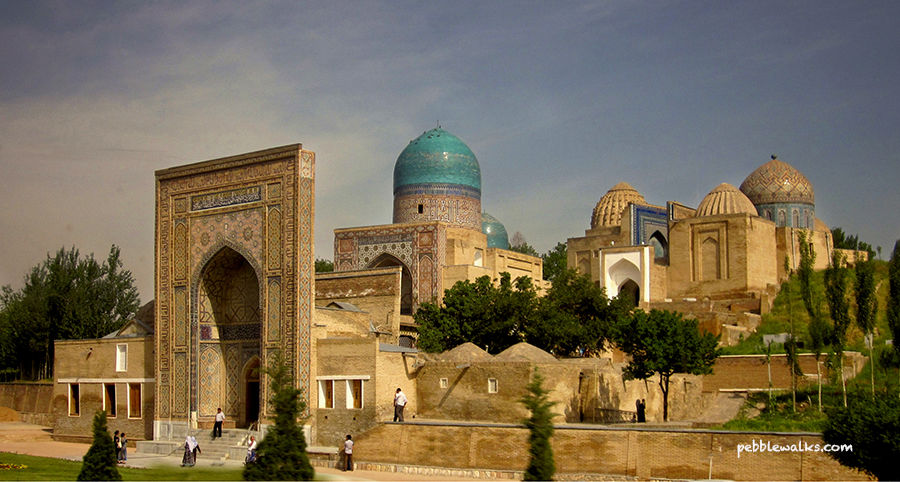
(The ceremonial entrance at the Southern end was constructed by Ulugh Beg, grandson of Timur Lane in the 15th Century. He was then the governor of Transoxiana which today includes Uzbekistan, Tajikistan, parts of Kyrgyzstan & Kazakhstan)
Showing reverence to the dead quite explains the architectural magnificence you see in most parts of Uzbekistan. Many of them are dedicated to those who have moved on. Be it the Gur Emir Mausoleum, Imam Al-Bukhari Complex or Shah-i-Zinda. And all of them are a visual delight.
SHAH-I-ZINDA ~ FEELS LIKE 10th CENTURY SAMARKAND
Actually 10th century is entirely my creation. I just didn’t know what I was getting into when I walked through that entrance but it felt like I was shifting times. The flight of stairs that led to the complex had some faithfuls dressed in traditional cuts & colors, leading the way. I would urge you walk up shedding all that you’ve seen in Samarkand and soak in the browns and rusticness. Be very present. And you will be overwhelmed.
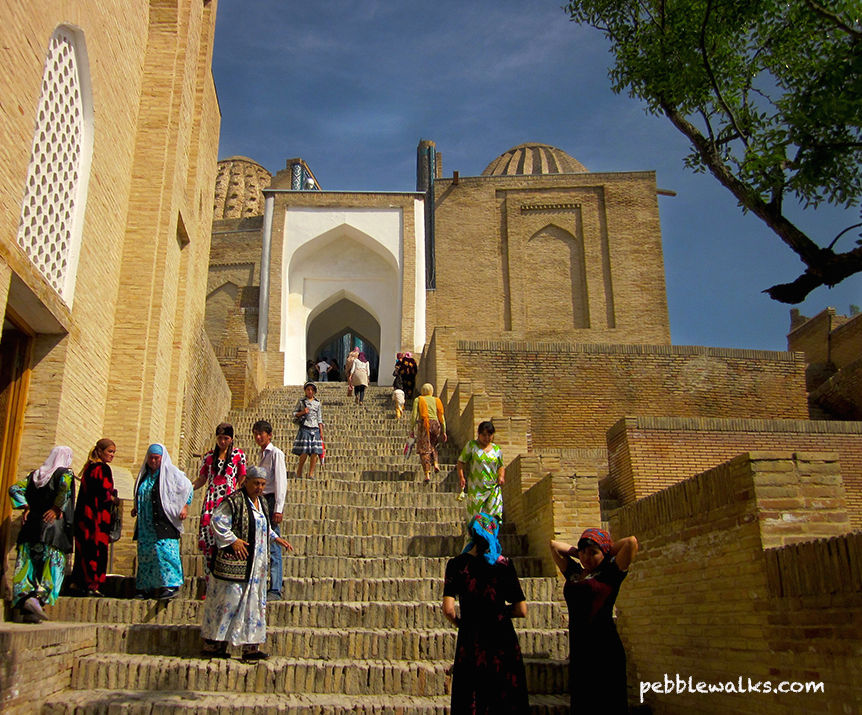
The moment you step in crossing the arch you’ll see why. The narrow street with many tall entrances swathed in waves of blue will make you wish you lived then, a long time ago. It will take you to a different era. I remember people walking about praying, bowing down, looking up at the sky. Just then a call to pause everything was heard and all of them stopped to say prayers in unison. On that very street.
A short while later a few others were kind enough to indulge me with a smile, so I could take a small moment back home. I have to say that all of the of Uzbek people I met were hospitable, from the youngest to the oldest. And it didn’t matter where you met them. They were elegant and so utterly warm. Some were conspicuous by the blue velvet robe (khalat) with gold work embroidery that they wore in a traditional way. I agree it appears to be quite heavy, but falls very gracefully on the women folk.
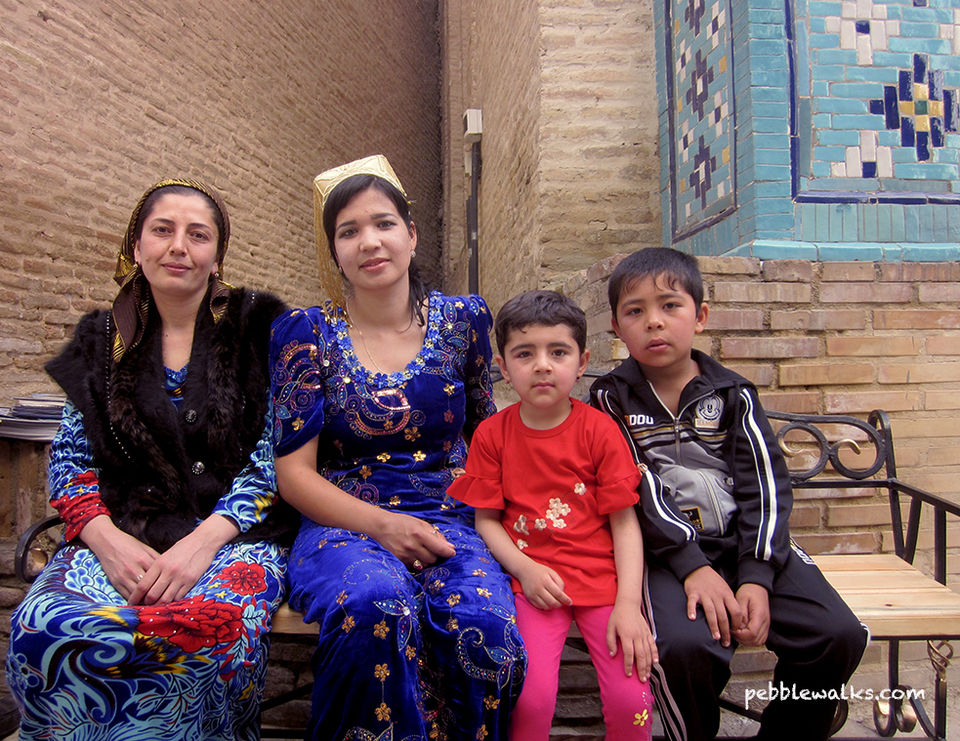
DISCOVERING THE MEDIEVAL STREET
The mausoleum ensemble was formed in the middle of the 11th century near the fortified wall of Afrasiab (ancient city of Samarkand) & the structure above the grave of Kusam Ibn Abbas served as the core of the composition. It was built around the space where the ziyarat (worship on the main grave) was done. It is said that the architecture school it represents is the monumental-decorative art from most of Central Asia & specifically the Maveraunnehir style. The complex comprises a lower, middle & upper structure connected by arched dome passageways.
The entire corridor is full of funerary buildings and houses one of the most important shrines for people of this land.
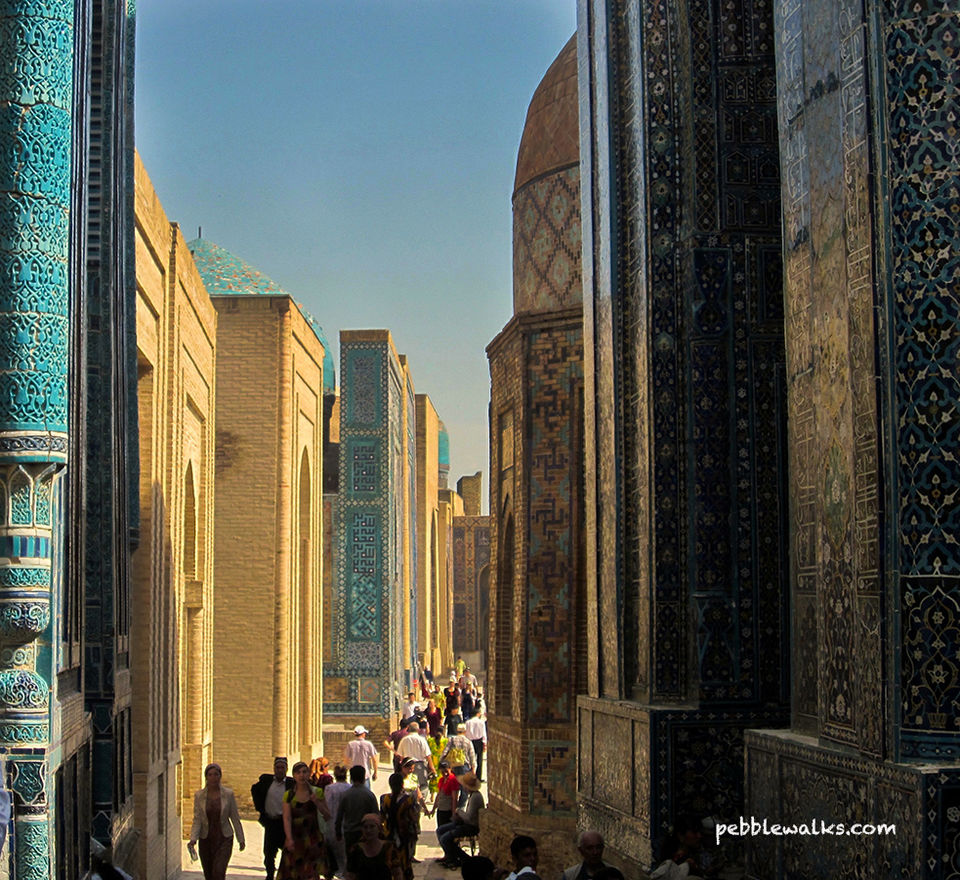
(One of the earliest world travelers Ibn Battuta of Moroccan descent, spoke of the Shah-i-Zinda in his travel tales describing it lucidly. It is said that during his stay in Samarkand in the 14th Century, this was the only monument he wrote about in detail)
While the earliest of the creations date back to the 11th century very little remains of it. And the tiled finished walls & ceilings are from later times (14th-15th Century), done when Timur ruled the land. Pilgrims visit the street to pay their respects to the resting place of the Prophet’s cousin. This comprises a mosque, mausoleum & chillyakhana (room for the 40-day fast) all of which which is in the Northern part of the street. I did visit it and paid my respects as well. But seen all through the walk up to this structure are also the burial places of Timur’s family, actually his female relatives & important religious leaders too.
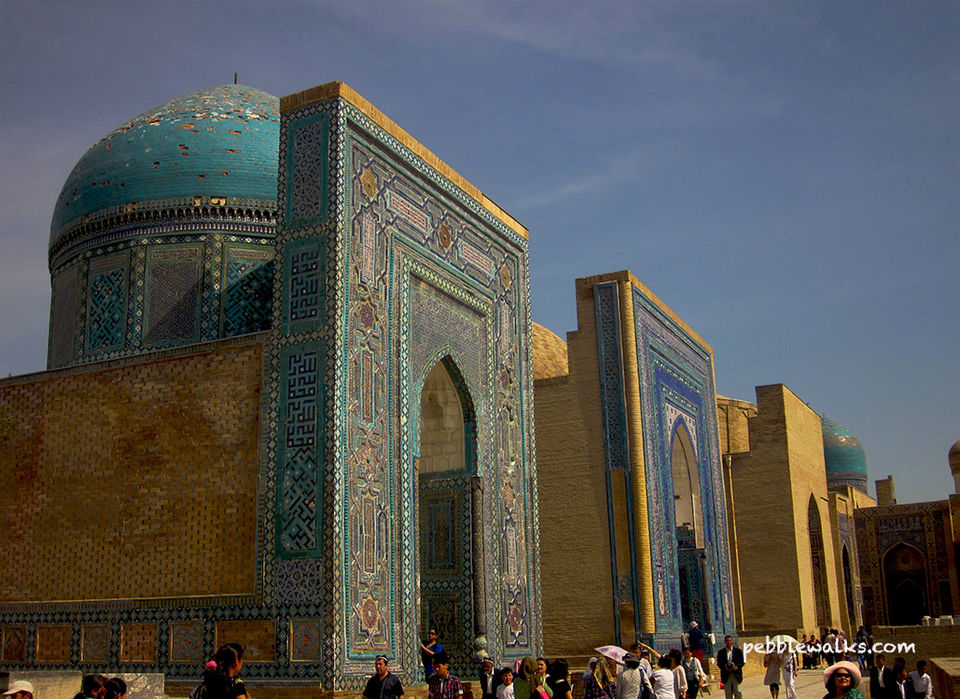
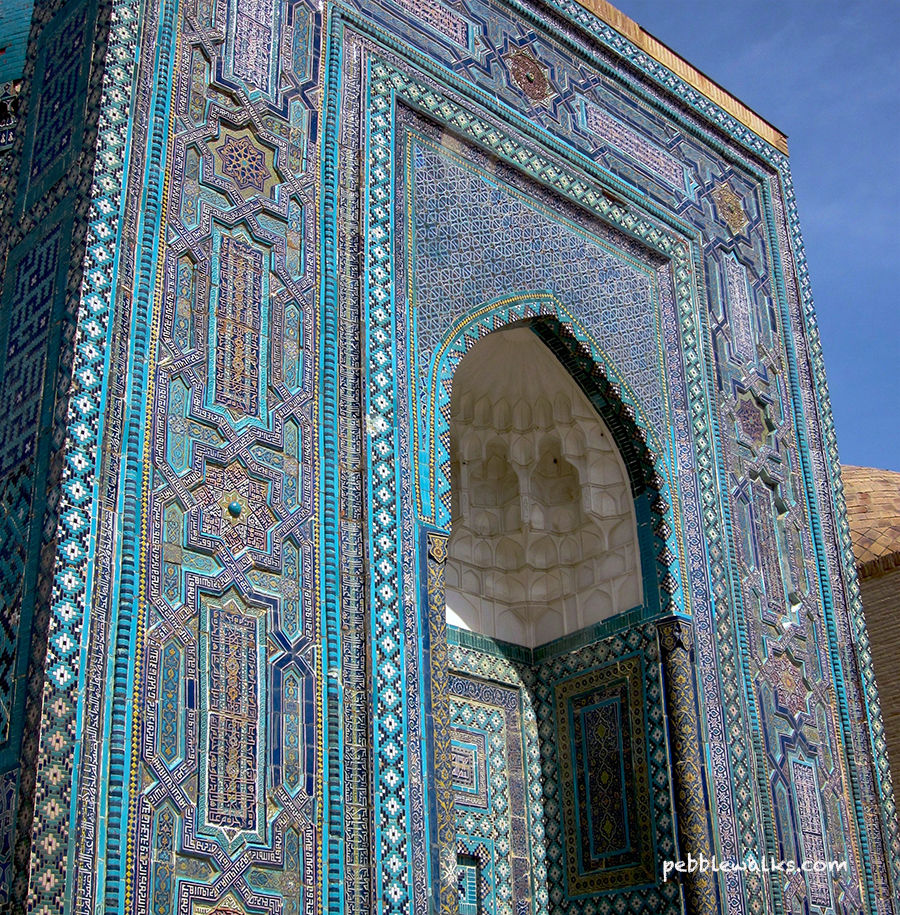
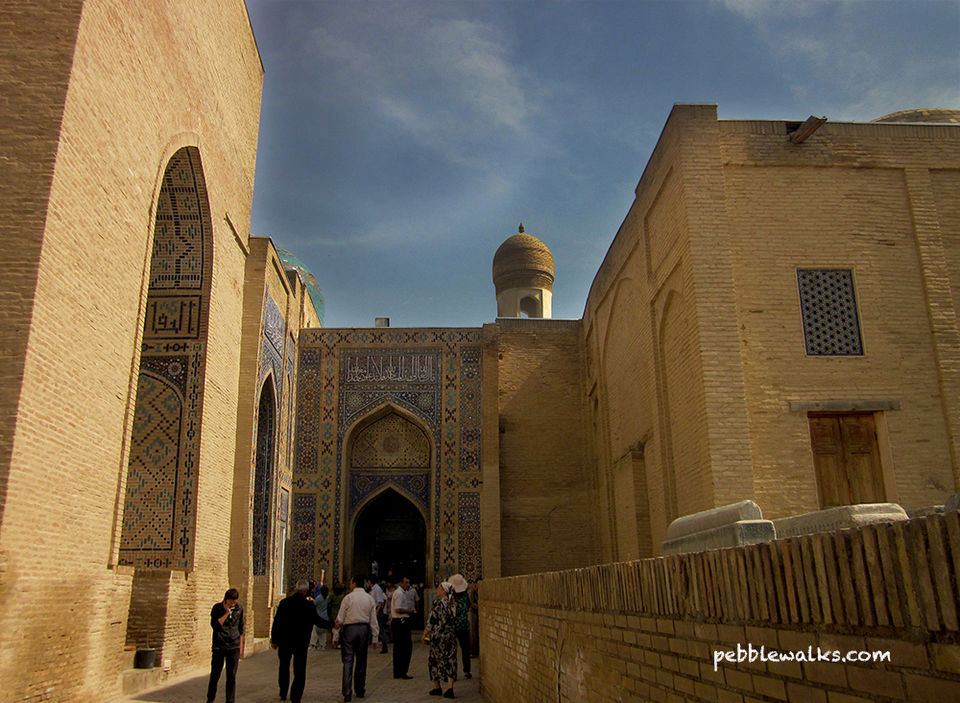
BLUE IS BEAUTIFUL
On both sides of the street are the crypts kept in structures that look similar. Tall rectangular entrances with tiled patterns & verses welcome you into buildings with mesmerizing blue domes. These inscriptions are from the Quran & also feature the names of the craftsmen. While this street will make you feel like a time traveler, what you will undoubtedly carry back is the facade & relief work.
This rich architectural jewel of Samarkand uses majolican tiles where a delicate gilded vegetative ornament is woven with an ornate lettering containing verses from the holy text. Carved mosaics & intricate relief in the ceiling with a combination of a dominant sky blue, turquoise, deep blue & white, play to form a visual effect like no other.
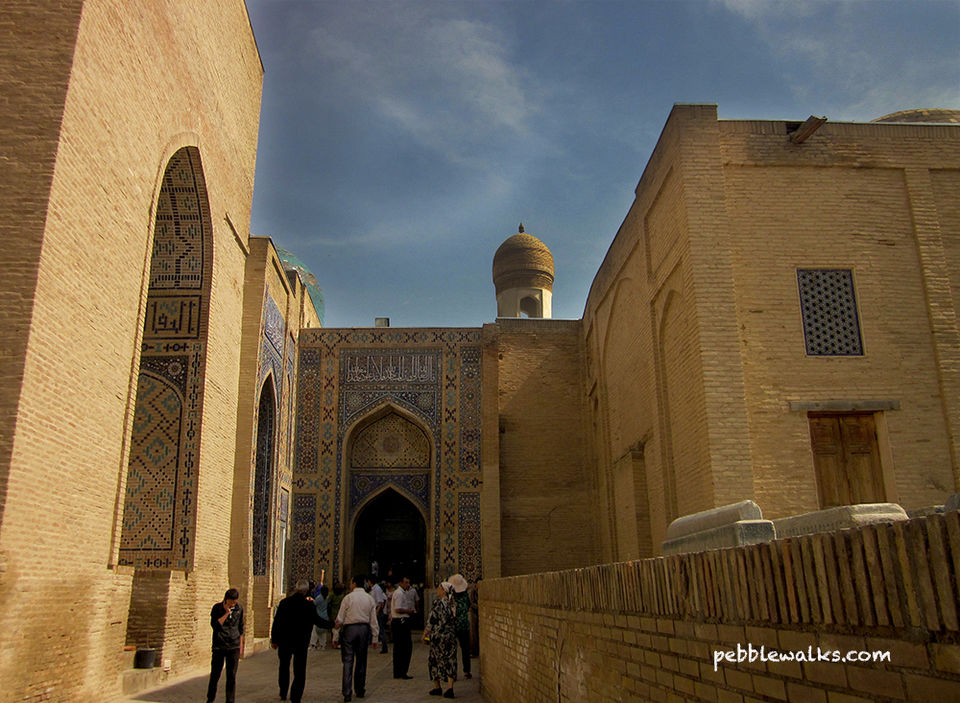
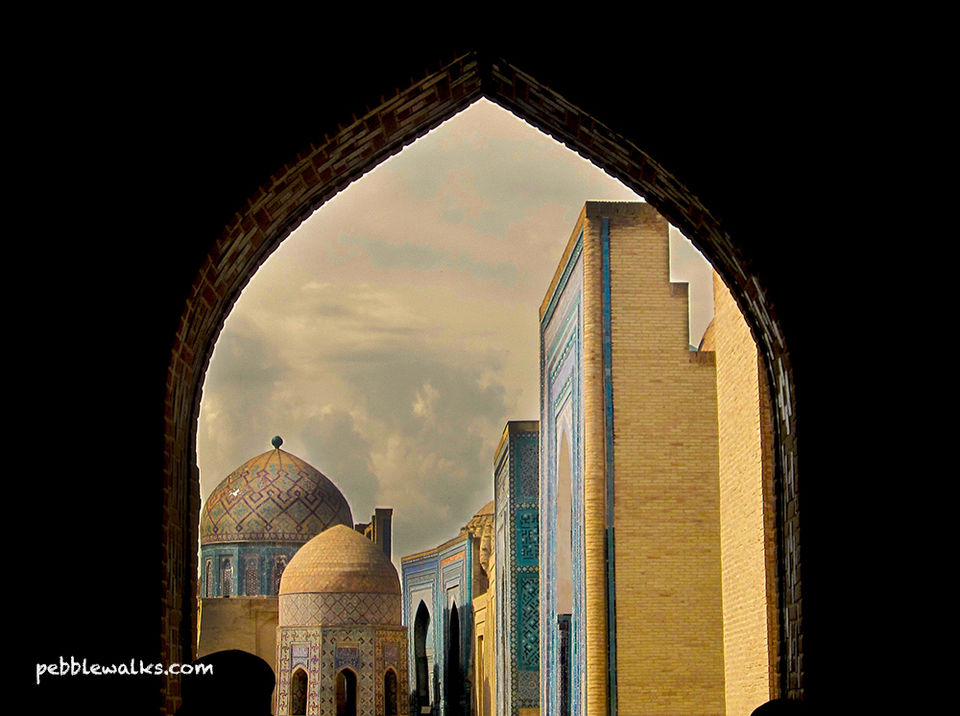
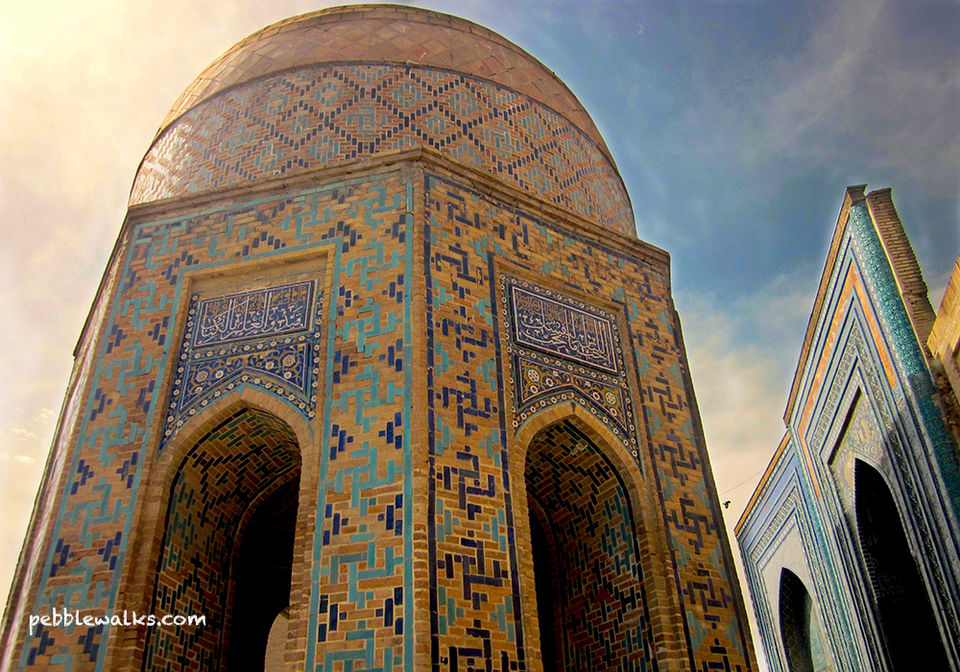
Once you step out of the same Southern entrance you stepped in from, is when you realize that you had actually paid a visit to a burial place. Peace be with all of them. A gang of women who had stepped out of the complex just at the moment I was passing by, decided to take a break for a round of ice cream. Here’s a friendly warning. If you do meet the older folks of this land, be prepared to be hugged real tight.
I stepped close to ask for permission to take a picture and they rewarded me with a hug of a lifetime. While the most vivid use of tile work & colors as well as architectural styles of Uzbekistan is seen in the Shah-i-Zinda, the real jewels of the land are the people. More on that soon.
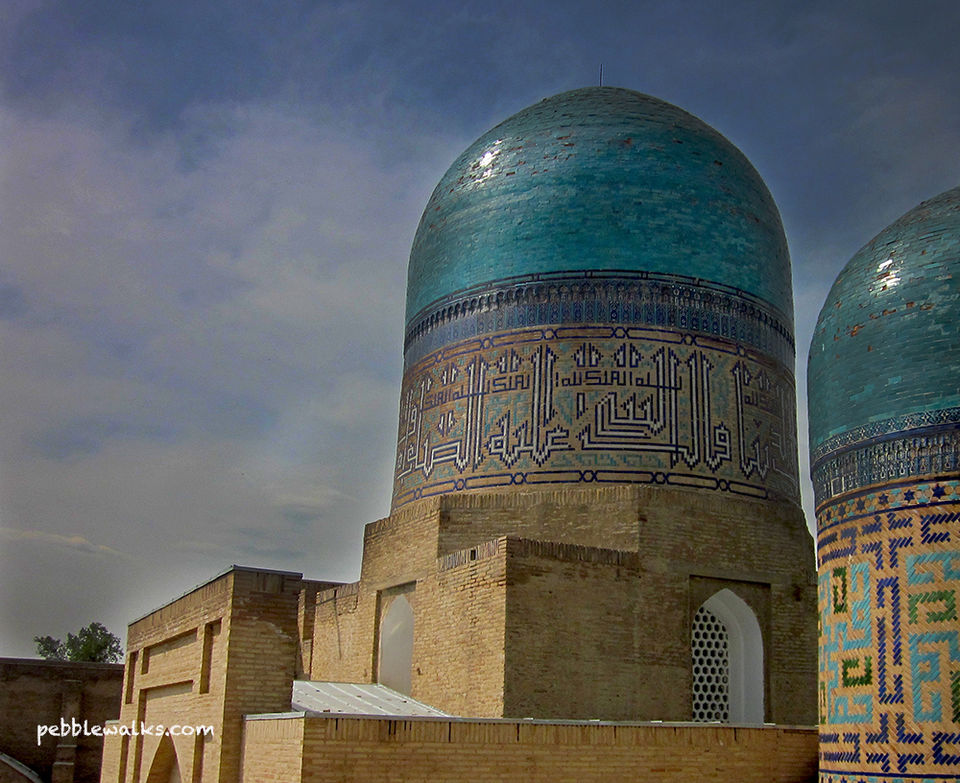
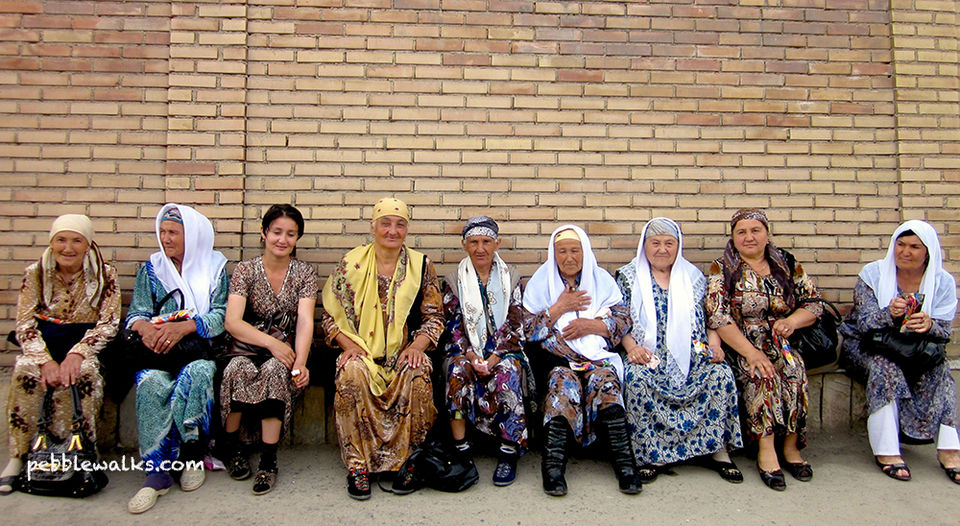
If Samarkand is on your mind, make Shah-i-Zinda a part of it. I promise you, its 200 meter corridor dedicated to long gone souls, will be an indelible moment.
Have you been to Uzbekistan? Would love to hear your favorite slice of history.
This blog was originally published on 'PEBBLEWALKS'


